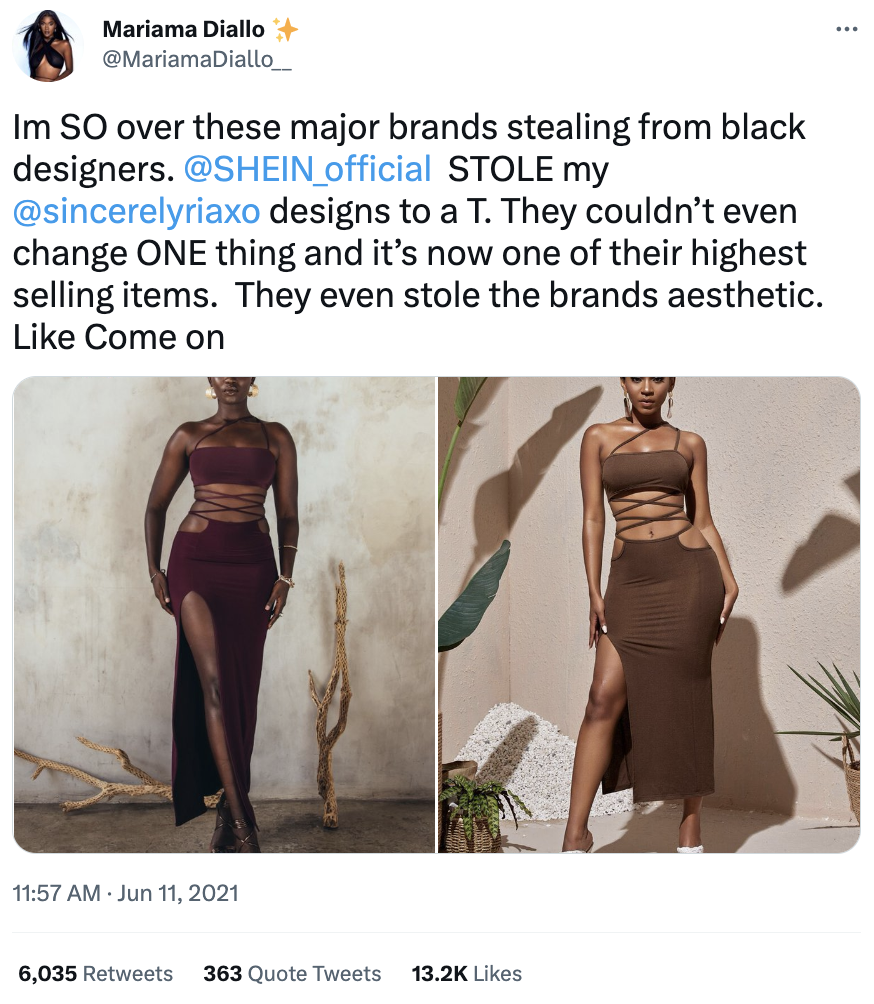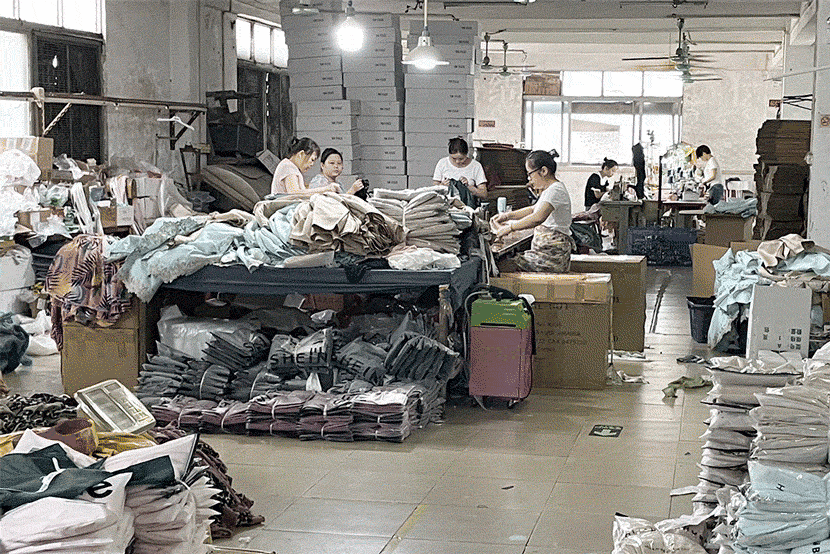With the economy’s current grapple with sluggish growth and mounting debt despite our culture of widespread consumerism, Americans are always looking for more affordable alternatives for trendy products. One facet of this phenomenon is the fashion industry, which is highly competitive, especially during the rise of e-commerce. The increasing demand for fast and affordable fashion among young consumers has led to the growth of environmentally and socially unsustainable fast fashion companies, especially one in particular. Shein is an online fast-fashion retailer infamous for its unrealistically cheap but trendy clothing.
Shein primarily targets young women aged 18-35 who are fashion-conscious, budget-conscious, and digitally savvy. The audience may include students, young professionals, and fashion enthusiasts who are active on social media platforms like Instagram and TikTok. This audience is particularly malleable, and Shein seems to take advantage of this by using manipulative marketing tactics. Shein targets young women who are not rich but are wealthy enough to purchase numerous pieces of clothing many times over a long period of time. These women generally care less about the sustainability of clothing and prefer quantity over quality. This cycle perpetuates Shein’s questionable production practices and further inflates the growing rate of clothing waste that ends up in landfills each year. As of January 2022, it’s estimated that around 85% of textiles end up in landfills each year, according to the Ellen MacArthur Foundation.
Shein’s primary purpose is to sell products and establish itself as a go-to destination for fashionable clothing. Additionally, Shein aims to cultivate a sense of community among its customers, leveraging social media content to engage with its audience. Their message revolves around offering a wide range of trendy products at affordable prices. The brand emphasizes style and self-expression, often using vibrant visuals and influencer collaborations to showcase its products. Shein relies heavily on visual elements such as photographs and videos to showcase its products and create aspirational imagery. By featuring diverse models and offering a wide range of sizes, they communicate a message of inclusivity and accessibility, appealing to a broader audience. Shein frequently partners with influencers and celebrities to promote its products. By associating the brand with well-known personalities, Shein creates a character-based appeal that aligns with the aspirational lifestyles of its target audience. Shein encourages its customers to share photos and videos of themselves wearing Shein products by offering discounts for sharing on social media and posting customer reviews on their website. All of these tactics work together to create a positive image for the impact Shein has on society, but covers up the brand’s harmful practices regarding personnel management. There are a variety of concerns about Shein’s business operations, including labor conditions in their supply chain, inadequate pay, unsafe working conditions, work-life balance, transparency, and accountability.
Shein taps into emotions like excitement, confidence, and belongingness to persuade customers to make purchases and engage with the brand. They often use tactics like limited-time offers, flash sales, and countdown timers to create a sense of urgency and encourage impulse buying. This tactic is problematic because customers buy impulsively without considering the negative environmental and social impacts of Shein. Shein sources products and labor similar to other fast fashion brands. They likely target low-income marginalized communities that are in turn polluted with harmful chemicals and compounds produced by the factory. Worldwide, the fashion industry is constantly overlooked as a severe issue in environmental protection. The fast fashion industry will accelerate climate change globally and continually harms the environment.
Shein’s marketing materials often evoke feelings of excitement, joy, and happiness. Bright colors, playful designs, and energetic imagery contribute to creating a sense of fun and positivity around the brand. Shein emphasizes the idea of fashion as a form of self-expression and identity. By showcasing a diverse range of styles and trends, the brand appeals to customers’ desire to express themselves and stand out from the crowd. Shein fosters a sense of belongingness and community among its customers through social media engagement and hashtags like #SheinTogether. By positioning itself as a brand that values connection and acceptance, Shein taps into customers’ emotional needs for belongingness and acceptance. However, customers can find this benefit in more sustainable ways, such as being involved in the thrift community.
Shein’s primary focus on offering trendy fashion at affordable prices caters to customers looking for budget-friendly options. This approach allows individuals from various economic backgrounds to access fashionable clothing without breaking the bank. Shein emphasizes the value customers receive by providing a wide range of products at competitive prices. This appeals to cost-conscious consumers who prioritize getting the most for their money. Shein emphasizes its affordable pricing and value proposition in its marketing messages. By offering trendy fashion at accessible prices, the brand appeals to customers’ logical desire to get the most for their money. Shein’s online platform offers convenience and accessibility, allowing customers to shop from the comfort of their homes and access a wide range of products with just a few clicks. This logical appeal emphasizes the ease and simplicity of shopping with Shein. While Shein is known for its affordable prices, the brand also seeks to reassure customers about the quality of its products. Through customer reviews, product descriptions, and transparent return policies, Shein provides logical reassurance to customers concerned about the quality of their purchases. Because Shein is fully ecommerce, they are able to project an image that is manipulative and far from the truth of the fast fashion practices they uphold. The reason Shein is able to provide clothing at such low prices is because of it’s budget cuts when it comes to paying employees and by stealing designs from individual designers and other businesses rather than paying fairly for product development.

By effectively combining character-based appeals, emotional appeals, and logical appeals, Shein engages its audience on multiple levels, reinforcing its brand identity and driving customer loyalty and sales despite their deceptive approach to communicating their “values”. Shein has faced criticism in the past for its sourcing practices, including concerns about labor conditions in its supply chain. Increased consciousness about ethical sourcing and labor rights could lead Shein to improve transparency and accountability in its operations. As consumer awareness and expectations continue to evolve, Shein may further enhance its efforts in these areas to align with changing values and preferences.


No comments yet.